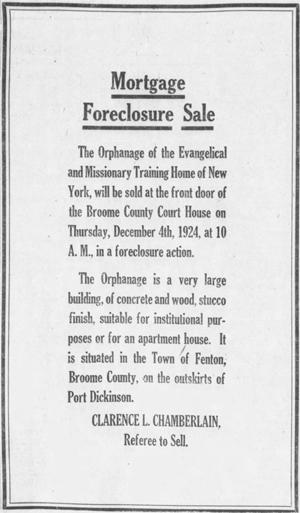| . (click on photos for larger view) |
 |
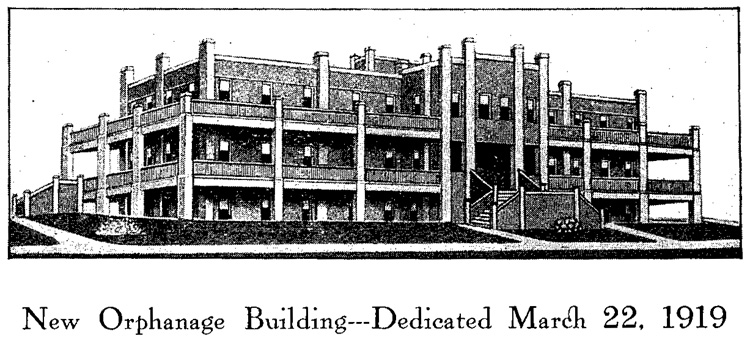 Image courtesy of Rev.
Gordon Warner
|
In the 1930s through 1970s several generations kids in Hillcrest (well, boys mostly) would play army or just hang out at a place known as "The Castle." 1 No one knew exactly what it was or had been but it was a two- or three-story concrete structure that apparently had been destroyed by fire, as attested by the charred beams among the debris. It was on the east side of the D.L.&W. Railroad line running north and south through Hillcrest and in close proximity to the Pilgrim Holiness Campground. The above photo was taken in about 1925 or 1930 looking east across the tracks from the end of Fenton Avenue and shows "The Castle" as it appeared before the fire. The aerial view below shows the location of The Castle and the remains of its concrete walls as it appeared in 1967. By then the balconies and facade seen above had disappeared. |
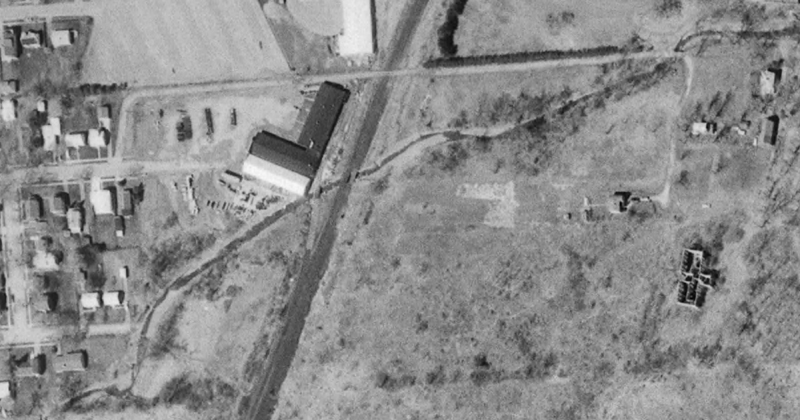 Photo copyright historicaerials.com
(Do not copy)
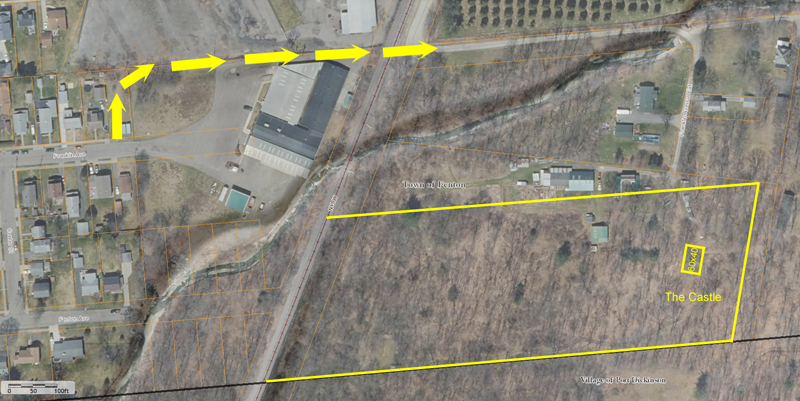 |
In 1905, the Pentecostal Rescue Mission of Binghamton began holding "holiness camp meetings" in the Macomber farm grove in the Town of Fenton north of Port Dickinson.2 In 1913 the Pentecostal Mission Camp Meeting Association announced that it would build a three-story orphanage for 200 children near the campground at Macomber Grove for which purpose land was transferred to Rev. Preston Kennedy by Mr. Macomber.3 The following year an unfortunate event occurred at the new orphanage where it was alleged that a small boy was horsewhipped by an employee who was soon removed. Although the boy is not named in the newspaper, it is possible that he was one of the three boys who were caught earlier in the month taking a boat and a canoe from a nearby campsite. All three were were inmates in the orphanage. In 1918 a second unfortunate event occurred when several children were nearly overcome by coal gas fumes. |
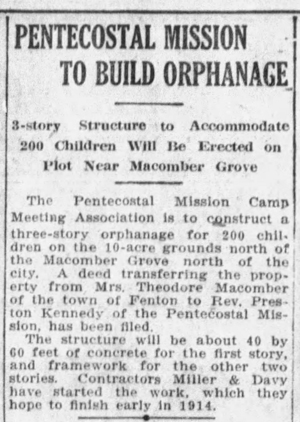 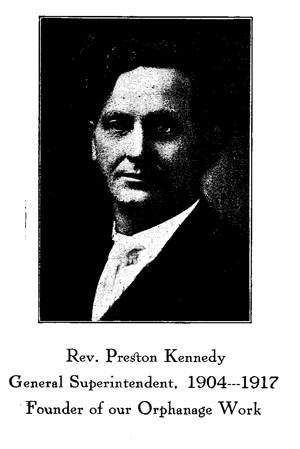 Image courtesy of Rev.
Gordon Warner
|
As a result of the coal gas incident in 1918, Rev. Kennedy had set to work on a device to prevent future such problems. Whether or not he actually "invented" the Little Giant Coal-Gas Consumer as the newspaper account states, the device was offered for sale by The Little Giant Co. in February, 1923.6 The following July an action was brought in the Broome County Supreme Court against Rev. Kennedy and others to foreclose on a mortgage of about $13,000 held by Caleb P. Whipple on 13 acres of land including Rev. Kennedy's home and the former orphanage. On July 11, 1923 a judgement of foreclosure in favor of Mr. Whipple and against Rev. Kennedy and others was entered in the Broome County Clerk's Office. A public auction of the properties was scheduled for August 24, 1923 at 10:30 a.m. at the front door of the Broome County Court House in Binghamton. Exactly what happened next is a little unclear. |
|
Beginning on May 5, 1924 classified advertisements for "Castle Apartments" located on Franklin Avenue began to appear (right).7 These ads ran continuously for two months through July 8, with one final ad on October 4 1924. |
 |
On October 17, 1924 Little Giant Gas Consumer, Inc. brought a foreclosure action against Preston and Ina B. Kennedy. It appears that Rev. Kennedy had been able to arrange another mortgage for $13,000 through Little Giant Gas Consumer, Inc. to purchase back the properties and pay off Mr. Whipple. This mortgage went unpaid a year later, however, resulting in the foreclosure action and sale (see the display ad below left and note the suggestion of using the building as an apartment house). In March 1925 it was announced that referee Chamberlain had transferred the Orphanage to The Little Giant Gas Consumer Co., Inc. Then one month later on Friday, April 24, 1925 without any prior advertising another notice (right) appeared only the day before the sale. |
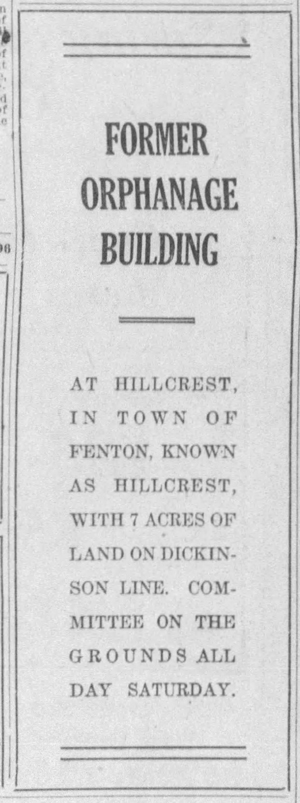 |
In tax years 1925 and 1926 Ellis Fahs, as the occupant of record, was apparently responsible for payment of delinquent taxes of $331.42 overdue from the previous year, although Rev. Kennedy was apparently still associated with it as noted in the Tax Sale Notice at right. Mr. Fahs had since moved to 18 Beacon Street. It wasn't until 1927 that the Broome County Treasurer's Office realized that it had been assessing the wrong parties for the taxes which by then hadn't been paid for several years.8 |
 |
It seems that the Little Giant Gas Consumer Company had failed in its hasty attempt to sell the property in April, 1925 and was stuck with it. For the next eighteen years the taxes went unpaid until a new state law made it simpler for the Broome County Board of Supervisors to take possession of it. The supervisors solicited bids on the property, now known as No. 8-4-11 on the tax map or as the Pentecostal Missionary Home, to be submitted not later than 10:00 a.m. March 6, 1944, but apparently no one was interested. It wasn't until 1953 that attorney Henry R. Multer purchased it from the county perhaps hoping to subdivide it into building lots. Unfortunately there was apparently still no interest until finally the current owner decided it to add it to his adjacent property. |
|
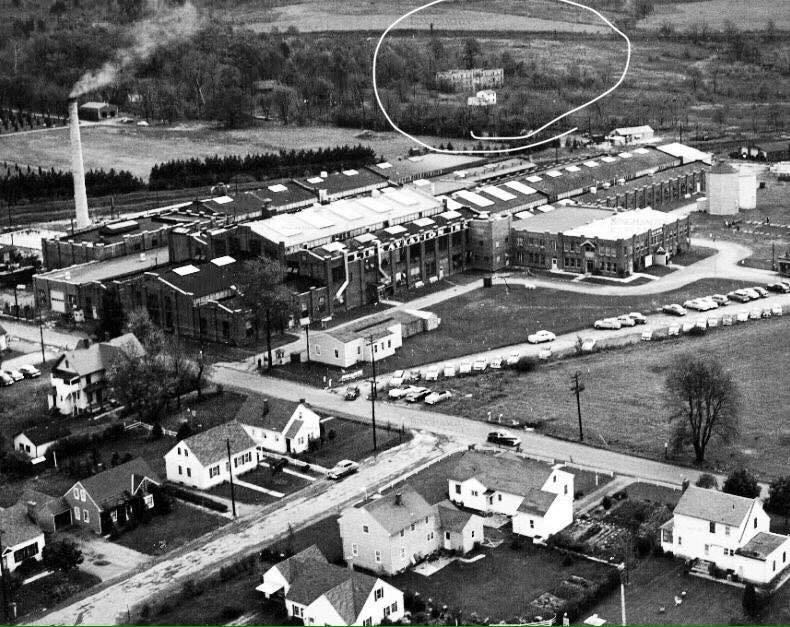 Aerial view of Link Aviation on Nowlan Road with
The Castle (circled) in the background, courtesy
of John Burtis
|
|
|
|
|
If you have any photos, additional information, or corrections please contact Dick Martz
Some Other Binghamton Pages:
A Daughter of the Forest?
Nineteenth-Century Photographers
1906 Centennial Parade
